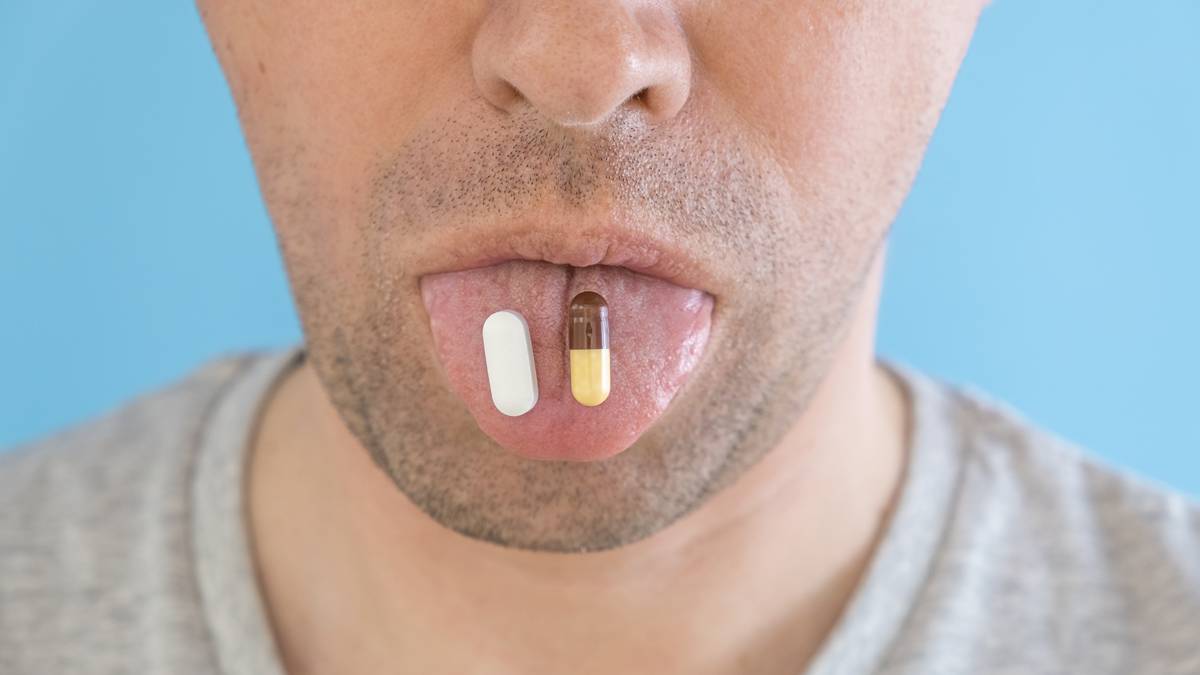Health Check: Sigma’s success prescription is double-digit sales growth, pleasing merger cost savings

It's early days, but Sigma Health's reverse merger with Chemist Warehouse has provided the prescription to success. Pic via Getty
- Chemist giant Sigma is posting double-digit sales growth …
- … whilst rival EBOS meets guidance
- Mach 7 puts customers first in ‘back to basics’ approach
A little over six months after merging with Chemist Warehouse (CW), Sigma Healthcare (ASX:SIG) has upped its cost synergy target to $100 million per year, from $60 million.
More broadly the union is off to a solid start, with Sigma reporting a full-year net profit of $530 million, down 2.1% but up 40% on a ‘normalised’ basis.
Revenue rose 82%, to $6 billion.
As you could imagine, the actual numbers were a dog’s breakfast, given the merger was effective only from February.
Accounting rules treat the transaction as a reverse merger. So the numbers include the whole year for CW and the merger period for Sigma.
The ‘real’ bottom line is that investors liked what they saw, pushing Sigma shares up 10% this morning.
Opportunities knock
CEO Vikesh Ramsunder said the numbers showed the strength of the merger and the greater opportunities that beckon.
“We are now a stronger, more integrated healthcare business with the [requisite] scale capability and long-term growth pathways.”
While like-for-like retail network sales grew 14% to $10.3 billion, CW managed a “standout” 11.3% growth.
The company achieved “robust” growth across the major product categories.
These include beauty, vitamins and supplements, healthcare/medicines, baby/children and pongy high-margin fragrances.
Ramsunder says the current year has started strongly, with double-digit, like-for-like retail network sales growth so far. This is a slight increment on the June half sales run rate.
Prior to the merger, Sigma already owned the Sigma and Discount Drug Store banners.
The company cites 881 franchised stores, having opened 35 during the period (some of them offshore).
The complement of CW stores stands at 588 and the yellow and red livery is only going to get more ubiquitous.
“We anticipate rolling out Chemist Warehouse stores at a consistent cadence to our historical run rate in Australia and internationally,” Ramsunder says.
Exclusive labels to boost margins
The company is also eyeing its own exclusive label and to date has rolled out 269 products under the Wagner generics banner.
To be achieved over four years, the $100 million of cost savings come at a one-off cost of $95-105 million.
The savings will be crystallised in several ways. But a key element is pushing 29% more product through the group’s rationalised distribution centres.
Another key feature of the results is that Sigma’s debt stands at $752 million, well below the $1-1.3 billion flagged in the prospectus.
But not everything is going right with Sigma’s lofty offshore ambitions. The company is closing its bricks and mortar CW stores in China, in favour of online distribution.
EBOS shrugs off chunky contract loss
Still on matters apothecarial, trans-Tasman chemist owner and drug distributor EBOS Group (ASX:EBO) posted similarly untidy numbers, given the company lost a large contract to supply Chemist Warehouse in the 2023-24 financial year.
EBOS reported 2024-25 revenue of NZ$12.26 billion, down 7% and earnings before interest tax depreciation and amortisation (EBITDA) of NZ$585 million (down 6.4%).
We normally go with the official numbers, just for consistency’s sake. But sometimes Arbitrarily Adjusted Stockhead Ballpark (AASB) accounting standards are called for.
Thus, take out the NZ$2.23 billion of prior year CW revenue and group turnover climbed 12%.
EBITDA rose 7.5%, with net profit falling 15% to NZ$258 million, rather than the official decreed 21% fall to NZ$215 million.
We guess the main thing is the EBITDA was in line with management’s guidance of NZ$575 million to $600 million.
Still, narky investors sold the stock off by circa 15% – maybe because Sigma is winning the pharmacy war.
EBOS owns the Terry White Chemmart network and the Symbion wholesale business. The company is also a top dog in dry canine food on both sides of the Tasman.
It also has a strong Southeast Asia medical device distribution business Transmedic, which grew at double digits.
“Despite a material adjustment to business volumes, EBOS continued to deliver a strong underlying performance,” chimes chair Elizabeth Coutts.
Changing course at Mach 7 speed
Radiology imaging facilitator Mach7 Technologies (ASX:M7T) is undergoing a major overhaul under new CEO Teri Thomas, who only started on June 30.
Thus, she doesn’t claim credit for the group’s full year net profit of $400,000, compared to the previous $1.2 million deficit.
“We are trending in the right direction on profitability,” she declares.
Revenue gained 16% to $33.8 million, in line with the company’s guidance. Annual recurring revenue was $25.3 million, 20% higher.
The US-focused Mach7 provides diagnostic and imaging tools to radiologists, oncologists, cardiologists – and other ‘ologists’.
This is via digital picture archive communications systems, the diagnostic tool that clinicians use.
Mach 7 v Pro Medicus
Mach 7 is a bonsaied version of Pro Medicus (ASX:PME), which has a similar US slant. The companies bump into each other from time to time, but largely run their own race in the capacious market.
The former CEO of breast imager Volpara Health Technologies, Thomas has zeroed in on overhauling Mach7’s customer support function after dwindling satisfaction ratings.
This includes a “flight crew” structure. This means a client deals with the same team and they don’t have to outline their problem next time they call.
Is her next job at Telstra, perhaps?
“My overall assessment of Mach 7 is that it is an overall stable company that provides good value and software that works,” Thomas said at an earlier briefing.
“But it’s not perfect and that’s good news because it means there are things we can improve that will pay dividends.”
Mach 7 plans to announce a “comprehensive strategic review” in a couple of months.
Thomas says management won’t “boil the ocean”, but the status quo clearly won’t cut it.
Mach7 shares have lost 42% over the last years.
Given that, investors will be keen for Thomas to hit the after burners.
Management is no doubt the stock is undervalued, having bought $2.2 million of its own scrip during the half.
BCAL partners with Sonic
BCAL Diagnostics (ASX:BDX) shares this morning gained up to 23% after the company said it would partner with pathology titan Sonic Healthcare (ASX:SHL) to distribute its Breastest breast cancer assay.
The compact means that women can now attend one of Sonic’s 93 Sydney pathology centres to access the blood-based diagnostic.
Breastest is for women with dense breast tissue, which means tumors are harder to detect on an image.
Sonic has been trialling the tool since March, when BCAL launched the test locally.
In the June quarter, BCAL “exceeded expectations” by selling 107 tests across eight clinics, generating $22,000.
Yep – it’s early days.
Related Topics

UNLOCK INSIGHTS
Discover the untold stories of emerging ASX stocks.
Daily news and expert analysis, it's free to subscribe.
By proceeding, you confirm you understand that we handle personal information in accordance with our Privacy Policy.








